Faired and framed.
Posted By Russ Emerson on March 17, 2010 at 11:22 am
After a brief interruption in the project due to the need to install my new home theater system (woohoo) it was back to work on the Launch.
We left off with the molds securely attached to the false keel. Before going any further, the molds have to be faired, that is, their outer edges need to be shaped so that the planking, when applied, will make contact against the full thickness of the frames (which will be situated on the molds… be patient.) If this isn’t done, contact will only be made against the edges — not a particularly sturdy way of building.
By way of demonstration, I’ll re-borrow an image I stole borrowed from Keith Julier when I described the process for the Black Prince.
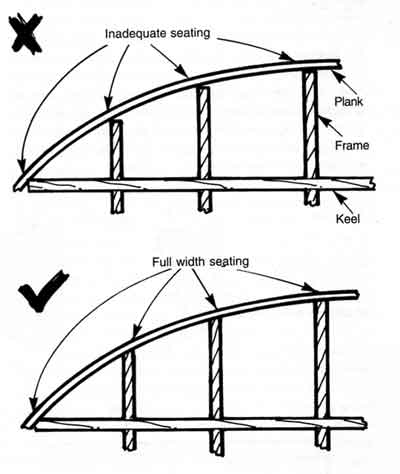
I used a Perma-Grit sander to shape the molds, checking my progress frequently with a strip of basswood.
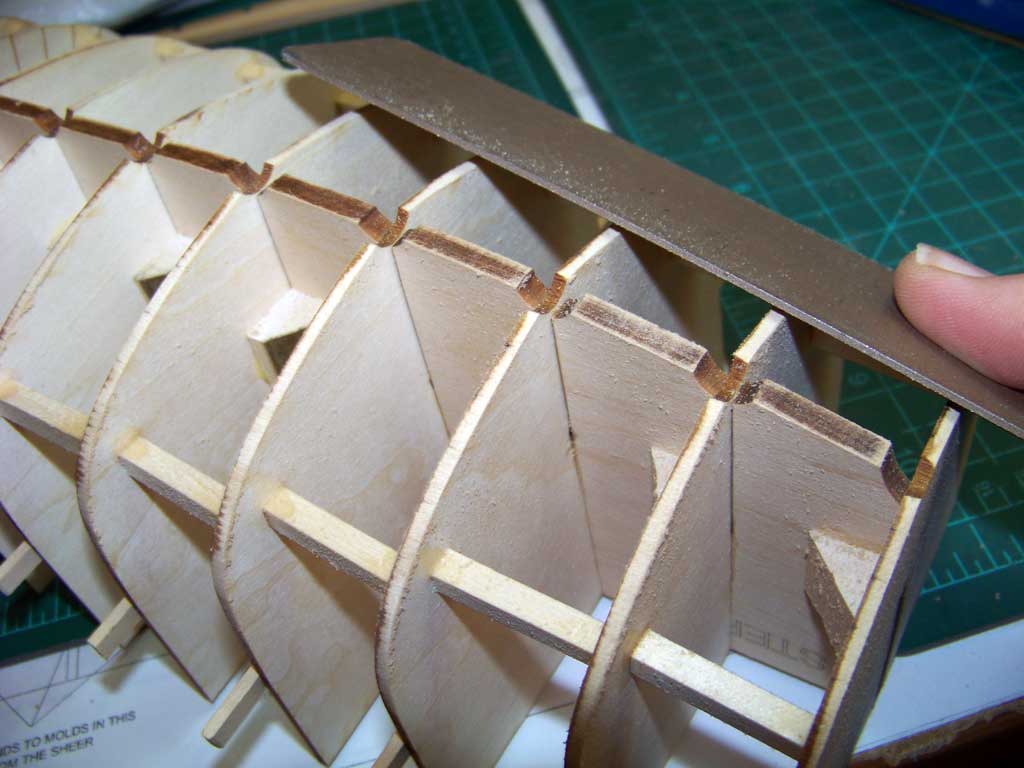
[Click to embiggen]
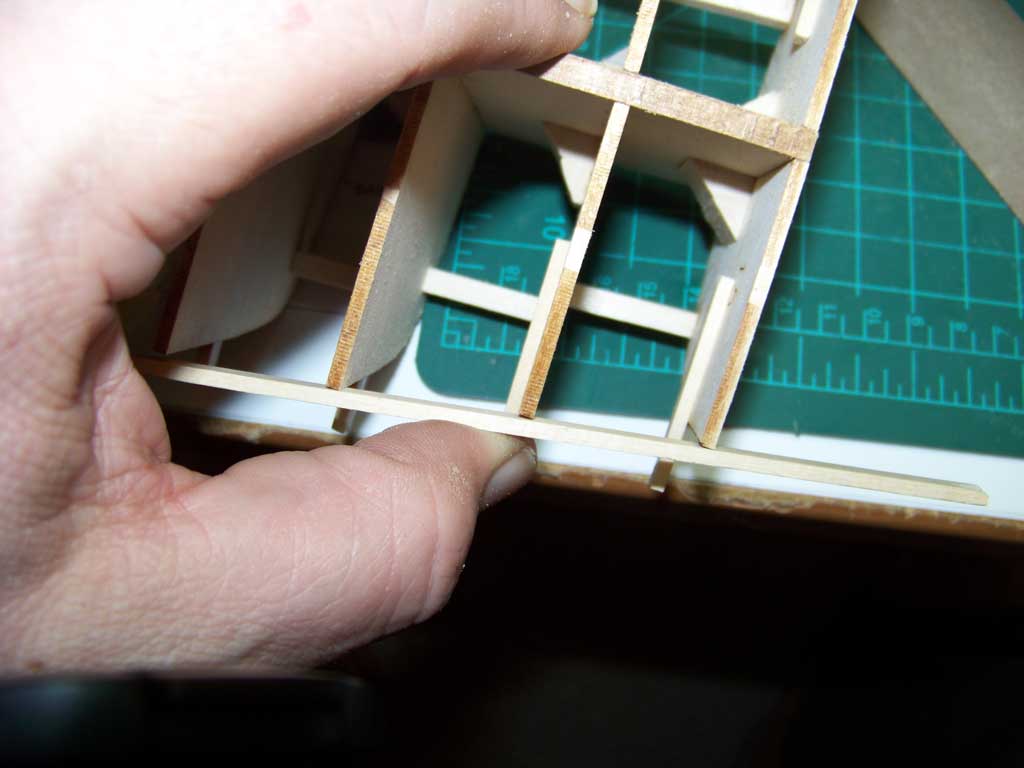
[Click to embiggen]
Next, tabs were spot-glued to the jig’s false keel — they’re there to align the keel with the false keel for the framing process. The keel was set onto the jig between the tabs, and secured at the bow end by a dowel inserted through a sandwich of the stem and a pair of alignment blocks, and with pins through the alignment tabs.
The transom was then attached. A pair of spacers were glued to the last mold, then the transom carefully aligned and glued to the stern post — not to the spacers. The idea is that after the planking, the launch will be removed from the jig. In aid of this, small holes were drilled and nails were driven through the transom and into the temporary spacers.
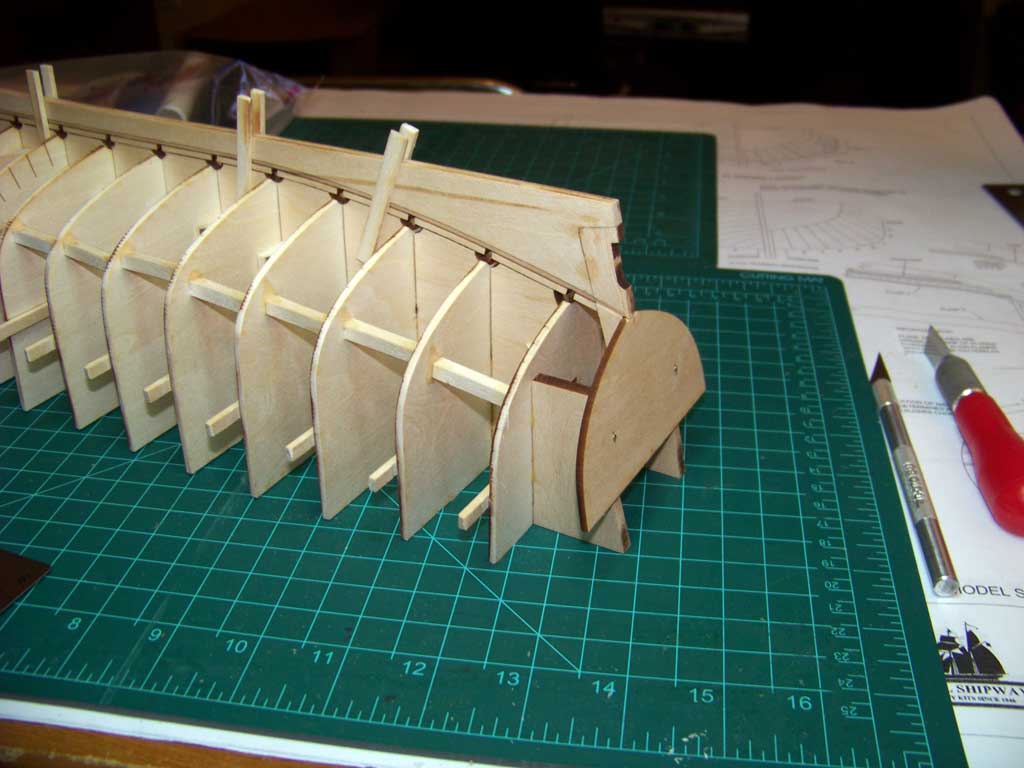
[Click to embiggen]
We now come to the first really difficult part of the construction: bending on the frames.
The frames are fabricated of 3/32″ cherry strips; they have to be bent to fit the molds. Cherry tends to bend better than basswood, but it’s not a sure thing. Strips were cut to length — about 4½” — and given a good long soak in freshly boiled water to soften them up.
I had acquired (via eBay) a long out-of-production plank bender made by the now-defunct Italian ship model producer Aeropiccola. It’s pretty much just a soldering iron with a fancy head. Wet strips of wood held against the hot iron are [relatively] easily bent; the steam generated by the heat loosens the wood fibers.
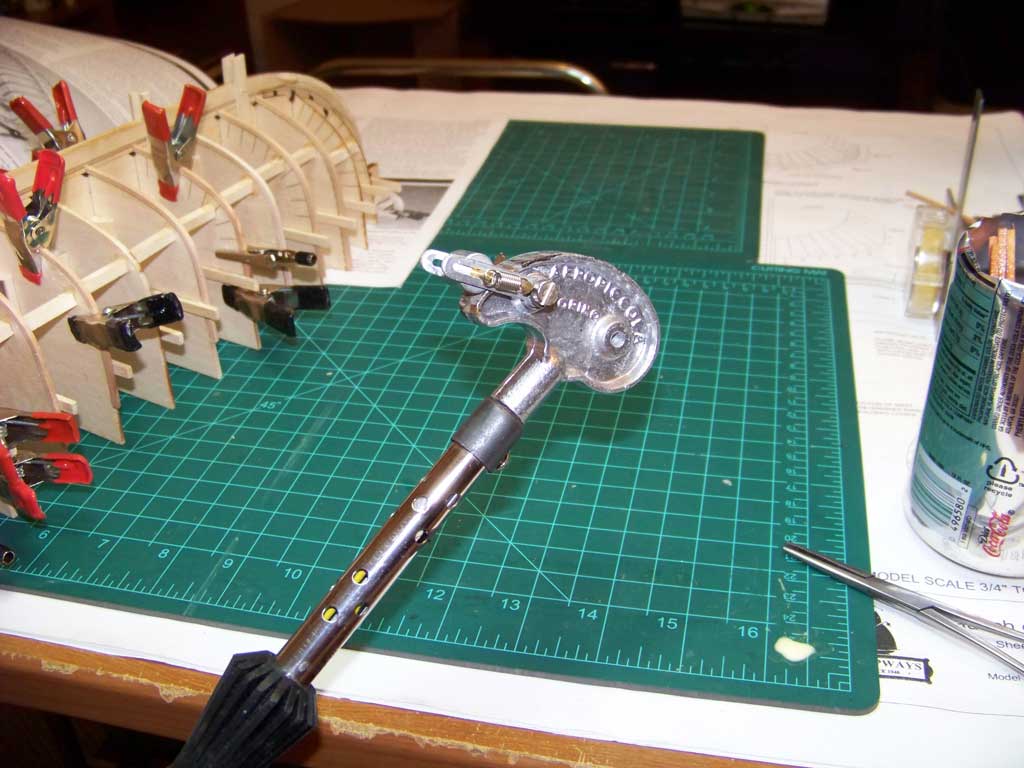
[Click to embiggen]
Nevertheless, wood being wood, I had a breakage rate of about one in three during the bending. Fortunately, the likelihood of this happening was taken into account by the kit manufacturer, and a surplus of cherry was provided.
The frames were bent and clamped, with no glue at this stage, to the molds and left overnight to dry. I expected a fair amount of “springback,” but after drying, they retained their shape quite well.

[Click to embiggen]
The edges of the molds were then waxed — I used beeswax — to help prevent the frames from sticking to the molds in case of some misapplication of glue. The bent frames were then glued into the notches in the keel, and spot-glued to the molds below the sheer tabs (where they will eventually be cut off.)
After letting the glue cure overnight, all the clamps were removed, the outsides of the frames lightly sanded, and the transom faired in line with the frames. (No framing is needed on the transom — the planks will attach directly to it.)
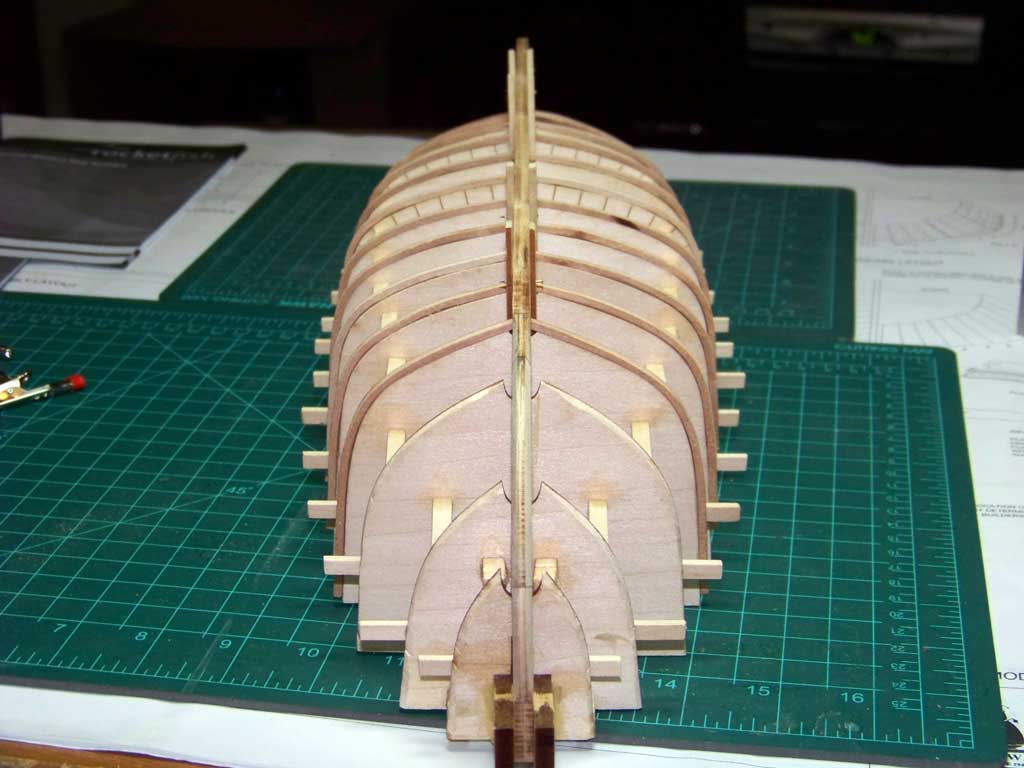
[Click to embiggen]
Coming up, the most daunting task yet: planking. Wish me luck.
Comments